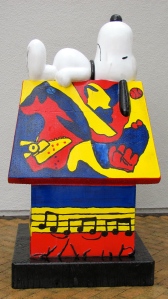 |
The program's director, Barb Raab, told me that most of the dogs coming into the shelter are hounds that have been used for hunting and pit bulls, used in fighting. North Carolina law prohibits organizations like Pawsitive Partners from bringing dogs of any breed deemed aggressive into their programs and pit bulls are on that no-train list.
As we walked along the outdoor kennels, some dogs snarled at us. Others cowered in corners. Several, however, either warily or eagerly, came near looking for attention. If a dog passed this initial assessment, referred to as "cage presentation," he or she was brought inside the shelter to undergo 18 more tests. Through these, the evaluators sought to get a sense of how the dog might respond to a tooth exam, a baby, a toddler, a cat, another dog, a loud noise, a hug, a toy, a food bowl. A doll and a stuffed animal stood in for the baby and toddler and the cats were safely secured out of reach.
If a candidate passed these evaluations, he or she was then tested for heartworm. I was saddened to see two delightful little dogs being returned to their cages when they were found to have high-antigen levels for the parasite.
 |
| Barb Raab, Founder and Director of the Pawsitive Partners Prison Program, working with one of the dogs under consideration. |
Just five animals would be selected this day for an eight-week round of training and these successful candidates will be put through their paces by specially-screened inmates at the Pender County Correctional Institution.
The fear in the eyes, the tension in the bodies, and the tightly-tucked tails made me wonder what kind of abuse some of the dogs I saw must have endured prior to being brought into the shelter. It delighted me no end to think how different their lives are likely to be once they are placed in loving adoptive homes.
Pawsitive Partners is credited with saving the lives of canines but human beings are being transformed through their efforts as well. One of the program's volunteers told me he has never forgotten the words shared by one of the inmates after his first round of classes with the Pawsitive Partners dogs. The man said the experience marked the first time in his life he'd ever thought of anyone but himself and drugs.






